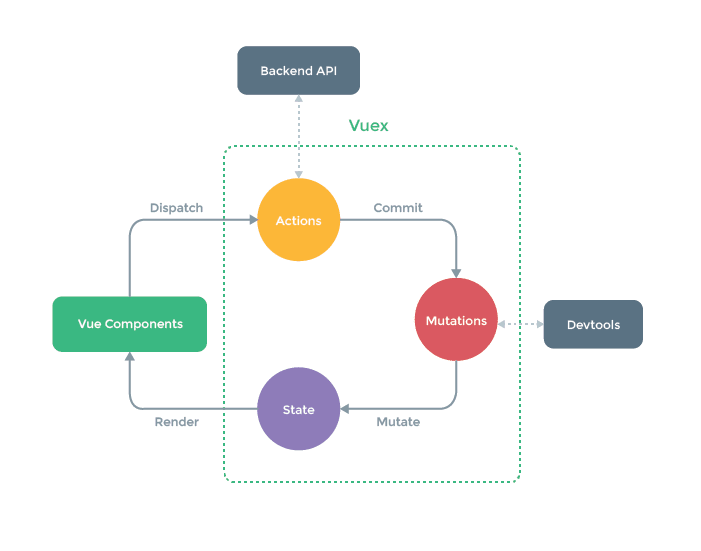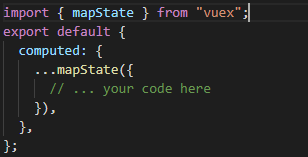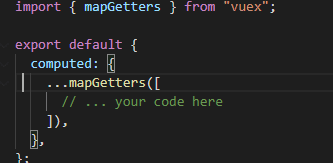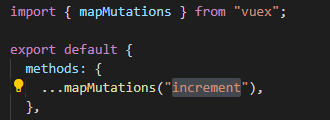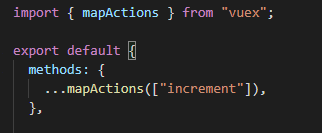Vuex is a state management pattern

Islam Ahmed Hassan
Posted on June 22, 2021
Vuex
Vuex is a state management pattern + library for Vue.js applications
The state, the source of truth that drives our app;
The view, a declarative mapping of the state;
The actions, the possible ways the state could change in reaction to user inputs from the view
Usage
To understand Vuex it’s much easier if you first understand the problem that it’s designed to solve.
1 - Sharing data between components especially from child to
parent now it’s much easier .
2 - Imagine you have centralized store for saving every single
data and this store shared between all other components Dreams
come true .
3 - Make your asynchronous requests in one place for dealing with
API so , your integration become more organized and secure .
Installation
NPM
npm install vuex --save
Yarn
yarn add vuex
When used with a module system, you must explicitly install Vuex as a plugin:
import Vue from 'vue'
import Vuex from 'vuex'
Vue.use(Vuex)
You don’t need to do this when using global script tags
CDN
Structure
State
Single object contains all your application level state and serves as the “single source of truth.” This also means usually you will have only one store for each application
Getters
Used to compute derived state based on store state , vuex allows us to define “getters” in the store. You can think of them as computed properties for stores. Like computed properties, a getter’s result is cached based on its dependencies, and will only re-evaluate when some of its dependencies have changed.
Mutations
This is the only way to actually change state in a Vuex store is by committing a mutation.
Actions
Actions are similar to mutations, the differences being that:
Instead of mutating the state, actions commit mutations.
Actions can contain arbitrary asynchronous operations.
**As you can see in the **Vuex docs,, it comes with examples**
Conclusion
Vuex provides advanced topic and utilities than we were able to cover in this article.
This is a mere introduction to it, and by no means a comprehensive one. But we covered the part that is most often the biggest obstacle to adoption: understanding the concept and usage .

Posted on June 22, 2021
Join Our Newsletter. No Spam, Only the good stuff.
Sign up to receive the latest update from our blog.
